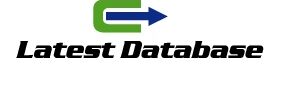In this complete guide that I made along with my friend Fernando Angulo from SEM rush, we are going to teach you to know in depth the types of links, as well as the 10 best strategies to get quality links chief information officer email database , and finally we offer you a checklist with the 10 most common mistakes in the link building that you should always avoid.
Video Course: How to analyze your back links in a simple way
In this video course I teach you how to easily analyze the incoming links to your domain, as well as how we can use these tools to find topics with which to get a greater number of quality links.
The Link Building currently has a great weight in an SEO strategy but many of the methods or techniques that were done in the past are being penalized by Google for considering them artificial, so with this guide we hope you know the best ways to get links natural that help you boost your positioning in the Google search engine.
The Link Building has a weight in the Google Algorithm of 30% or 40% #SEOHaz click to tweet
In this article you will find information about:
Types of links
Strategies to get links
Errors to avoid in the Link Building.
Tools to analyze the backlinks
What is a link
We are undoubtedly one of the words that has more synonyms when it comes to mentioning such as; link, hyperlink, link, hyperlink, link, and so on a long etc.
Something as simple as a link allows you to connect a content with a set of web pages, with which you can qualify, complete or complement the information that resides in it.
The structure of an HTML link
We all know the basic structure of an HTML link. There are other labels that we can use:
Target
This HTML tag defines the way in which the link will be accessed and can be of different types:
_self: It is the default option and will open the link in the same tab and window.
_blank: This option will open the link in a new browser window.
_top: Displays the web page without frames.
Title
This HTML tag allows us to add a title to any link, this title will appear when the user puts a mouse over it.
This label is very common its use in the images but it is also recommended to do it with our links.

The markers are used so that we can add links that take us to different parts of a page. These markers are useful with very long contents and facilitates the access of the users on it.
These markers are also known by the anchor name.
Types of links
From a general point of view there are 2 types of links; links with absolute path or links with relative path, but from the point of view of marketing a clear distinction is made in two types of links, such as internal links and external links.
Internal links
The internal links are those that point to a web page within the same domain.
I recommend you always use the internal links to connect your Blog articles because this way you will be able to transfer authority, increase visits and increase the number of visits per user.
I recommend this complete guide of internal links written by my friend Dean Romero.
external links
External links are those that point to a page from a different domain. In marketing slang, it is known as backlinks.
Years ago these backlinks accounted for 80% or 90% of their importance within the Google algorithm, which made positioning a web page was reduced to get links to our website.
Over time Google was reducing this percentage and currently can be between 30% and 40%, and although they have lost importance are still a fundamental aspect if we want to reach the TOP 1 of Google.
Everything points out that in the next few years this SEO factor off page may lose some strength, but in my opinion it will never disappear and will always be an important part of the web positioning strategy.
Types of external links
There are 2 types of external links since Google introduced the “nofollow” tag.
Link dofollow or follow: This is the link we all know and is the default link most used by most users. This link conveys authority and strength, which is what we know in marketing as “link juice”
